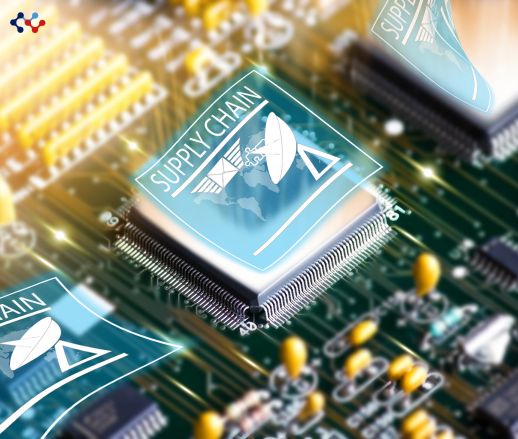
Global supply chains are under more stress than ever. Market volatility, geopolitical shocks, and labor shortages have exposed the limits of traditional forecasting. Static spreadsheets and gut-feel planning simply can’t match the speed of disruption.
Enter SAP’s new generation of AI-driven supply chain planning tools—powered by SAP S/4HANA, SAP Integrated Business Planning (IBP), and SAP Business Network. These tools don’t just help companies react faster—they predict and prevent problems before they occur.
The AI Revolution in Supply Chain Planning
SAP has spent the last few years embedding machine learning and predictive intelligence directly into its planning ecosystem.
Modules like SAP IBP for Demand and SAP AI Core combine historical data, IoT signals, and market sentiment to generate near-real-time insights.
According to a 2024 IDC Futurescape report, organizations implementing AI-driven planning within SAP environments reported:
- 15–25% reduction in forecasting errors
- 30% shorter planning cycles
- 10–15% decrease in inventory carrying costs
(SAP Blog – IDC Futurescape Predictions)
This shift from descriptive to prescriptive planning means that AI doesn’t just inform decisions—it makes them actionable.
What’s Changing Inside SAP’s AI Supply Chain Suite
SAP has evolved its supply chain planning architecture through three critical capabilities:
- Predictive Planning (SAP IBP + AI Core)
- Uses time-series forecasting and causal models to anticipate demand fluctuations.
- Continuously learns from past cycles and external disruptions.
- Reference: SAP Help Portal – Manage Forecast Models (IBP)
- Automated Exception Management
- Machine learning prioritizes planning exceptions and suggests next best actions.
- Reduces manual interventions by up to 40%, per SAP internal benchmarks.
- Collaborative Visibility (SAP Business Network)
- Connects suppliers, manufacturers, and distributors in real time.
- Shares live forecasts, stock levels, and shipment updates.
From Forecasting to Prescriptive Intelligence
A 2024 SAPinsider report found that companies implementing AI in supply chain planning achieved measurable operational gains:
| Metric | Before AI | After SAP AI Implementation |
|---|---|---|
| Forecast Accuracy | 68% | 87% |
| Planning Cycle Time | 14 days | 5 days |
| Manual Adjustments | 45% | 18% |
(SAPinsider – Deep Dive: Can AI Make a Difference to Your Supply Chain Planning?)
These numbers underline a clear message: predictive planning drives agility.
Real-World Impact: BASF Case
SAP’s partnership with BASF, one of the world’s largest chemical producers, shows this in action.
BASF adopted SAP IBP with AI-driven time-series modeling, reducing forecasting errors by 18% across European facilities and achieving €42 million in working-capital savings within 12 months.
(SAP News – SAP in IDC MarketScape: Supply Chain Planning Leader)
This success comes from integrating live plant data, supplier updates, and production constraints into one synchronized AI model—turning complexity into clarity.
The Science Behind It
The AI framework that powers SAP IBP uses:
- Reinforcement Learning: systems trained to optimize decisions dynamically.
(arXiv – Reinforcement Learning for Autonomous Warehouse Orchestration) - Demand Sensing Algorithms: blend real-time POS and social-media data to predict near-term shifts.
(Cloudfront PDF – SAP IBP Demand Sensing and Statistical Model) - Integrated Scenario Simulation: AI tests hundreds of what-if outcomes before a planner must decide.
Key Benefits
| Impact Area | With Traditional Planning | With AI-Driven SAP IBP |
|---|---|---|
| Forecast Accuracy | ±30% variance | ±10% variance |
| Inventory Turnover | 5× | 6.5× |
| Decision Latency | Days | Hours |
| Exception Handling | Manual | Automated |
Through these metrics, the value proposition becomes undeniable: AI doesn’t replace planners—it empowers them.
Challenges to Address
- Data Fragmentation: AI relies on clean, unified data from across ERP, CRM, and supplier systems.
- Change Management: Teams must shift from “reviewing data” to “trusting insights.”
- Ethical AI Governance: Explainable AI tools in SAP IBP show why the system recommends an action—critical for compliance and trust.
The Future: Autonomous Supply Chains
By 2027, SAP projects that over 60% of its S/4HANA customers will have adopted AI-enhanced planning modules.
In that world, systems won’t just support decisions—they’ll simulate, negotiate, and optimize them autonomously.
We’re entering an era of self-driving supply chains—and SAP’s AI-powered ecosystem is the pilot seat.
Conclusion
AI + SAP is not just an incremental upgrade; it’s a redefinition of supply chain intelligence.
For companies that adopt early, the rewards are significant: lower costs, faster responses, and predictive agility.
For those that wait—the gap between reactive and proactive operations will only widen.
The next leap is here. The only question is whether you’re planning for it—or being planned by it.
Sources:
- SAP Blog – IDC Futurescape: Intelligent ERP Predictions for 2025
https://www.sap.com/blogs/idc-futurescape-intelligent-erp-predictions-for-2025 - SAP Help Portal – Manage Forecast Models (IBP)
https://help.sap.com/docs/SAP_INTEGRATED_BUSINESS_PLANNING/feae3cea3cc549aaa9d9de7d363a83e6/603f8154c2652357e10000000a44176d.html - SAPinsider – Deep Dive: Can AI Make a Difference to Your Supply Chain Planning? (2024 PDF)
https://sapinsider.org/wp-content/uploads/2024/04/Deep-Dive-Can-AI-Make-a-Difference-to-Your-Supply-Chain-Planning-Tod-Stenger.pdf - arXiv – Reinforcement Learning for Autonomous Warehouse Orchestration in SAP Logistics Execution (2025)
https://arxiv.org/abs/2506.06523 - Cloudfront – Technological Exploration: SAP IBP’s Demand Sensing and Statistical Model (PDF)
https://d197for5662m48.cloudfront.net/documents/publicationstatus/255202/preprint_pdf/fa6a0f7e761499ac0ba20f2e20995b7b.pdf - SAP News – SAP in IDC MarketScape Worldwide Supply Chain Planning Leader (2025)
https://news.sap.com/2025/03/sap-idc-marketscape-worldwide-supply-chain-planning
